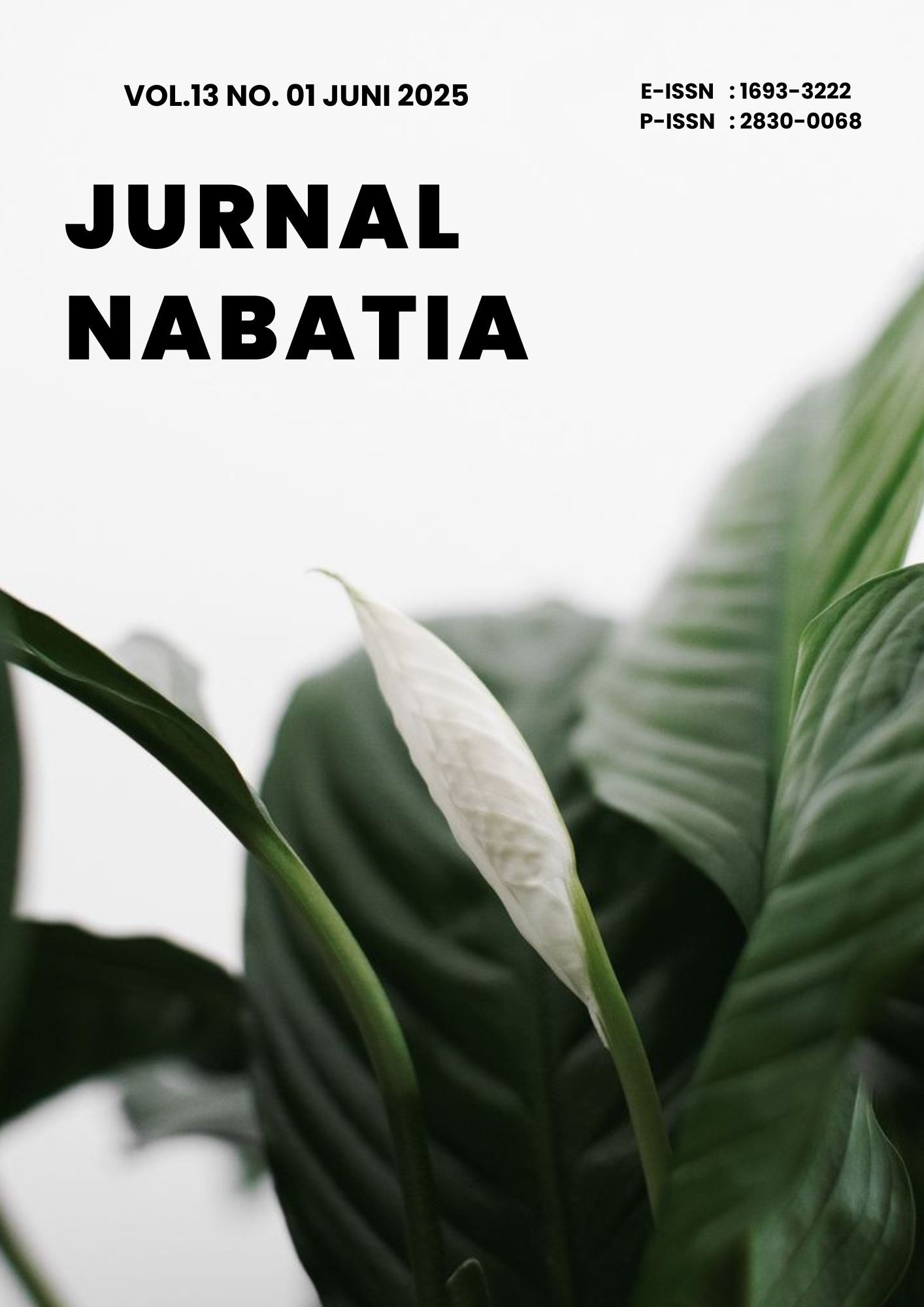Effect of Some Aromatic Plants on The Life of Mosquito Larvae and Virgins and Their Possible Use In Biological Control
DOI:
https://doi.org/10.21070/nabatia.v13i1.1652Keywords:
Origanum Vulgare, Culex Pipiens, Ghazwan Khadir, Mentha Pulegium, BugsAbstract
Contemporary control tactics emphasize the biological management of immature mosquito stages. It was observed that a seedling weighing 10 g in 100 cm of water containing Origanum vulgare and 30 larvae of Culex pipiens molestus accelerated their life cycle duration from 14 days in the control group to 11 days in the experimental group, alongside an 80% apparent reduction in larvae of C. pipiens molestus. The efficacy diminished to 50% and 30% at 200 cm and 300 cm, respectively, with stable plant weight. At start, there was a distinct distortion of the complement; Mint of the species Mentha pulegium has a lethal impact of 50% on mosquito larvae with individual seedlings. The constant weight in 100 cm of water was reduced to 35%, while an increase of 20% in water amount was seen at 200 cm and 300 cm, respectively, with stable plant weight. Additionally, this resulted in deformities in the remaining buds (inability to fly) by 18% ± 5%. The mint plant had no impact on the life cycle of mosquitoes.
References
E. A.-S. Shaalan and D. V. Canyon, “Mosquito oviposition deterrents,” Environ. Sci. Pollut. Res., vol. 25, no. 11, pp. 10207–10217, 2018, doi: 10.1007/s11356-017-0408-1. DOI: https://doi.org/10.1007/s11356-017-0408-1
F. Maggi and G. Benelli, “Essential Oils from Aromatic and Medicinal Plants as Effective Weapons Against Mosquito Vectors of Public Health Importance,” in Mosquito-borne Diseases: Implications for Public Health, G. Benelli and H. Mehlhorn, Eds. Cham: Springer International Publishing, 2018, pp. 69–129. doi: 10.1007/978-3-319-94075-5_6. DOI: https://doi.org/10.1007/978-3-319-94075-5_6
M. A. Asensi-Fabado and S. Munné-Bosch, “Vitamins in plants: occurrence, biosynthesis and antioxidant function,” Trends Plant Sci., vol. 15, no. 10, pp. 582–592, 2010, doi: https://doi.org/10.1016/j.tplants.2010.07.003. DOI: https://doi.org/10.1016/j.tplants.2010.07.003
I. H. Sellami, E. Maamouri, T. Chahed, W. A. Wannes, M. E. Kchouk, and B. Marzouk, “Effect of growth stage on the content and composition of the essential oil and phenolic fraction of sweet marjoram (Origanum majorana L.),” Ind. Crops Prod., vol. 30, no. 3, pp. 395–402, 2009, doi: https://doi.org/10.1016/j.indcrop.2009.07.010. DOI: https://doi.org/10.1016/j.indcrop.2009.07.010
P. M. Domingues and L. Santos, “Essential oil of pennyroyal (Mentha pulegium): Composition and applications as alternatives to pesticides—New tendencies,” Ind. Crops Prod., vol. 139, p. 111534, 2019, doi: https://doi.org/10.1016/j.indcrop.2019.111534. DOI: https://doi.org/10.1016/j.indcrop.2019.111534
V. K. Rahmathulla and H. M. Suresh, “Influence of temperature and humidity on growth and development of silk gland of a bivoltine silkworm hybrid,” pp. 24–29, 2013.
G. Jafari Khorsand, M. R. Morshedloo, H. Mumivand, Z. Emami Bistgani, F. Maggi, and A. Khademi, “Natural diversity in phenolic components and antioxidant properties of oregano (Origanum vulgare L.) accessions, grown under the same conditions,” Sci. Rep., vol. 12, no. 1, pp. 1–9, 2022, doi: 10.1038/s41598-022-09742-4. DOI: https://doi.org/10.1038/s41598-022-09742-4
Y. Akhtar and B. Isman, “Comparative growth inhibitory and antifeedant effects of plant extracts and pure allelochemicals on four phytophagous insect species,” J. Appl. Entomol., vol. 128, no. 1, pp. 32–38, 2004. DOI: https://doi.org/10.1046/j.1439-0418.2003.00806.x
E. Yazdani, J. J. Sendi, and J. Hajizadeh, “Effect of thymus vulgaris l. and origanum vulgare l. essential oils on toxicity, food consumption, and biochemical properties of lesser mulberry pyralid glyphodes pyloalis walker (Lepidoptera: Pyralidae),” J. Plant Prot. Res., vol. 54, no. 1, pp. 53–61, 2014, doi: 10.2478/jppr-2014-0008. DOI: https://doi.org/10.2478/jppr-2014-0008
D. B. AbdulRahman and A. M. Mohammad, “Effect of two nanoparticles and bacteria spores on some biological aspects of waxworm Galleria mellonella (Lepidoptera;Pyralidae),” NTU J. Pure Sci., vol. 1, no. 3, pp. 23–31, 2022, doi: 10.56286/ntujps.v1i3.270. DOI: https://doi.org/10.56286/ntujps.v1i3.270
I. Konstantopoulou, L. Vassilopoulou, P. Mavragani-Tsipidou, and Z. G. Scouras, “Insecticidal effects of essential oils. A study of the effects of essential oils extracted from eleven Greek aromatic plants on Drosophila auraria,” Experientia, vol. 48, no. 6, pp. 616–619, 1992, doi: 10.1007/BF01920251. DOI: https://doi.org/10.1007/BF01920251
S. Pradhan et al., “Photochemical Modulation of Biosafe Manganese Nanoparticles on Vigna radiata: A Detailed Molecular, Biochemical and Biophysical Study,” Environ. Sci. Technol., vol. 47, no. 22, pp. 13122–13131, 2013. DOI: https://doi.org/10.1021/es402659t
Downloads
Published
How to Cite
License
Copyright (c) 2025 Ghazwane Thamer Khadir Al-Rashidi, Abeer Isameel Ali

This work is licensed under a Creative Commons Attribution 4.0 International License.
Copyright Notice
Authors retain copyright and grant the journal right of first publication with the work simultaneously licensed under a Creative Commons Attribution 4.0 International License that allows others to share the work with an acknowledgement of the work's authorship and initial publication in this journal.





